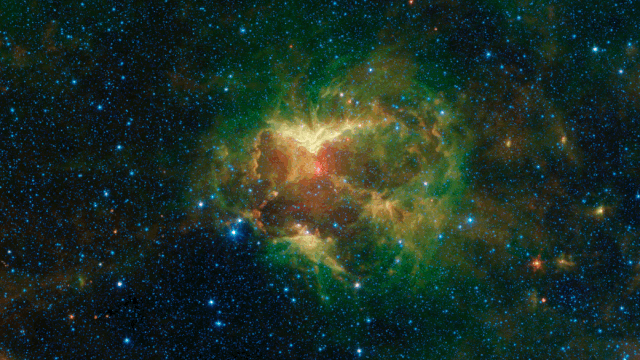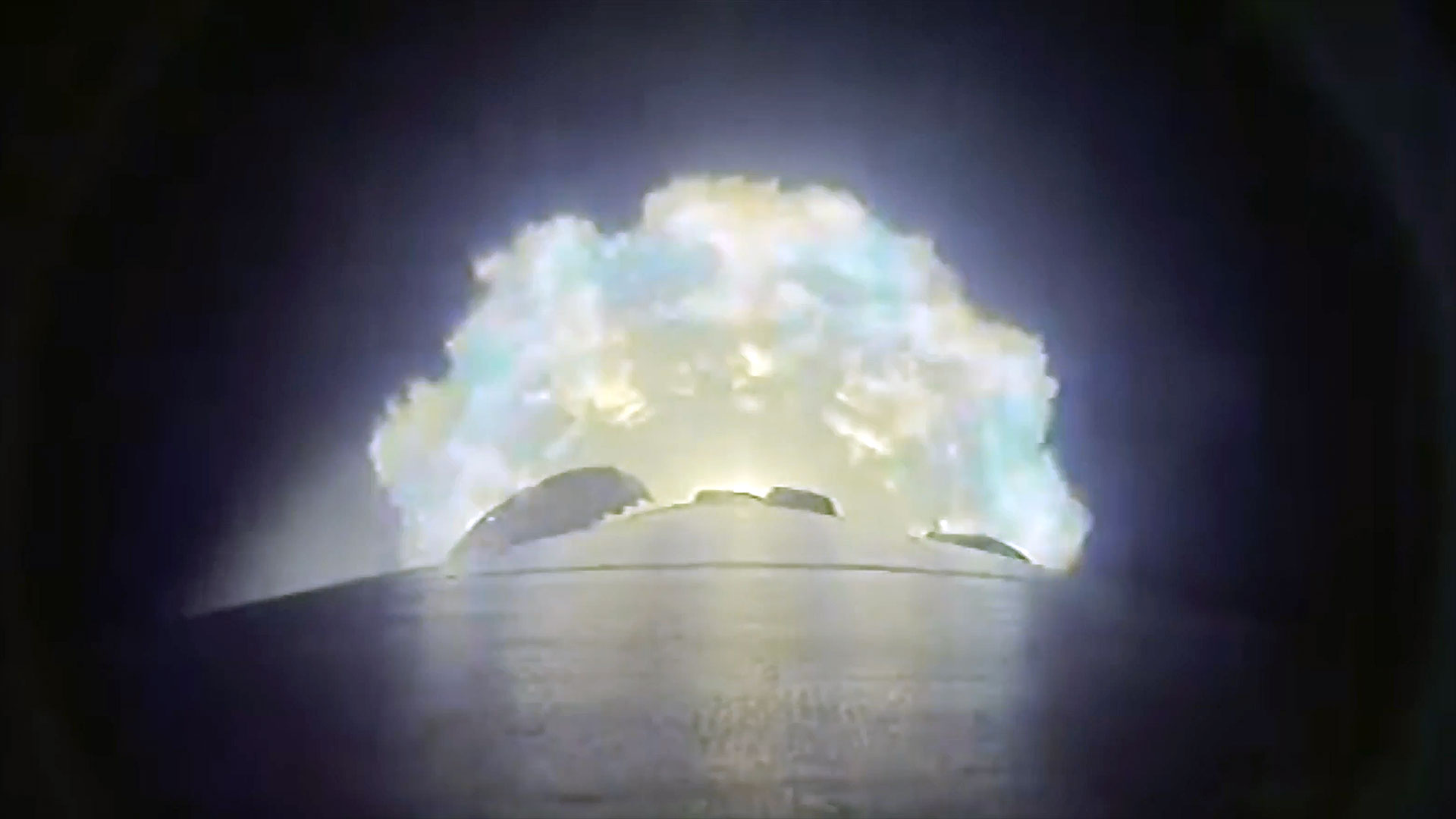It's Halloween! NASA Space Telescope Spots a Ghostly Cosmic Jack-O'Lantern

NASA's Spitzer Space Telescope has spotted a cosmic jack-o'-lantern.
Researchers uncovered the grimacing pumpkin while mapping star formation in the outer region of the Milky Way. A new animation of the nebula outlines the hollowed-out pumpkin, which appears to be screaming into space.
The carved-out cloud of gas and dust is caused by the outflow of radiation and particles from a massive O-type star that is 15 to 20 times more massive than the sun, according to a statement from NASA.
More: These Space Pumpkins from NASA's 2019 Carving Contest are EPIC!
Related: Haunting Photos: The Spookiest Nebulas in Space
The Spitzer Space Telescope detects infrared light and was able to reveal the massive glowing star at the center of the cloud, which is also known as a nebula. Streams of stellar material likely swept the surrounding dust and gas outward, carving deep gouges in the cloud, which scientists have nicknamed the Jack-o'-lantern Nebula.
The colors captured in the NASA image represent different wavelengths of infrared light. The green and red regions represent light emitted by dust radiating at different temperatures. The O-type star that carved out the Jack-o'-lantern is represented by the white spot near the center of the nebula, according to the statement.
The new GIF is a high-contrast version of Spitzer image, making the red wavelength more pronounced and, in turn, creating a spooky orange backdrop perfect for Halloween.
Breaking space news, the latest updates on rocket launches, skywatching events and more!
Observations of the Jack-o'-lantern Nebula were published July 18 in The Astrophysical Journal, as part of a study of the outer Milky Way.
- Space Ghost! Spooky Face with Glowing Eyes Glares at Us All in This Creepy Hubble Photo
- How to Carve a James Webb Space Telescope Pumpkin for a Very NASA Halloween
- Space Halloween Pumpkins a Cosmic Treat (Photos)
Follow Samantha Mathewson @Sam_Ashley13. Follow us on Twitter @Spacedotcom and on Facebook.

Samantha Mathewson joined Space.com as an intern in the summer of 2016. She received a B.A. in Journalism and Environmental Science at the University of New Haven, in Connecticut. Previously, her work has been published in Nature World News. When not writing or reading about science, Samantha enjoys traveling to new places and taking photos! You can follow her on Twitter @Sam_Ashley13.
